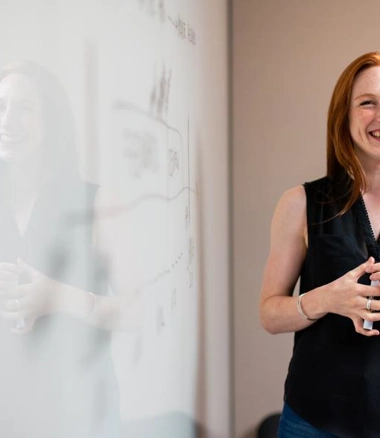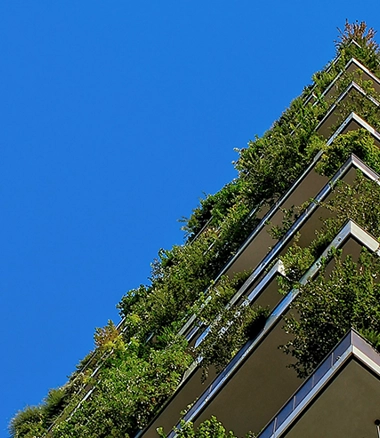
Your days are filled with the language of progress. Carbon neutrality. Climate resilience. Net-zero pathways. Sustainable futures.
On paper, you’re saving the world.
So why does it feel like you’re going nowhere?
A Quiet Exhaustion Beneath the Buzzwords
It happens in subtle moments. You’re reviewing another energy model, tweaking assumptions to meet an aggressive target. You’re told the client wants five stars, but not if it costs them a single extra dollar. You look at your screen and think:
Did I sign up for this?
Environmental engineers and sustainability consultants live at the intersection of idealism and reality. You believe in decarbonisation. You believe your work matters. But you’re caught in a system addicted to sustainability theatre.
And it’s wearing you down.
The Hidden Strain Behind Green Promises
Australia’s built environment is under immense pressure. The Green Building Council reported in 2024 that the number of certified sustainable buildings rose by 29% over the past five years. Yet behind these numbers is a truth few will admit: we’re hitting impressive certifications while emissions from the construction sector have barely budged.
The Australian Climate Change Authority warned in April 2024 that buildings remain one of the most stubborn sources of operational emissions, even as design compliance improves.
Here’s the contradiction that’s breaking people like you:
The industry shouts progress. But in meeting rooms, your ideas die by cost plan. Contractors water down specifications. Clients want sustainable outcomes, but not sustainable processes.
So you compromise. Over and over again.
The Emotional Cost of Constant Compromise
You started your career believing sustainable design was about innovation. Now it often feels like paperwork.
A sustainability engineer in Sydney told me recently:
“I spend so much time documenting compliance that I’ve stopped feeling like a designer. I’m just feeding rating systems.”
Another, working on large commercial towers, confessed:
“It’s exhausting fighting for small wins when you know the bigger moves are the only ones that count. We’re spinning wheels for the optics.”
This isn’t laziness. It’s a symptom of an industry that says sustainability is essential, then funds it like an optional extra.
When Purpose Turns Into Perfectionism
Here’s the deeper problem no one wants to discuss:
Sustainability work attracts people who care deeply. Who want to fix big problems. Who want their work to mean something.
But the system turns that idealism into self-inflicted pressure.
You push harder. You stay late. You perfect reports. Because you believe if you just try a bit more, you can push the project across the line.
But you can’t always. And that’s what makes this burnout unique. It isn’t just long hours. It’s the psychic toll of believing that failure is planetary.
Other engineers burn out because they’re overloaded. Sustainability professionals burn out because they feel responsible for saving the future.
The Illusion of Progress
We talk endlessly about “green innovation.” Yet often, it’s the same story repeated.
Energy models tweaked to hit a rating. “Sustainable” materials with hidden carbon costs. Certifications displayed on marketing boards while gas boilers remain hidden in the plant room.
Australia’s 2024 National Greenhouse Accounts showed embodied carbon from construction materials is rising, despite operational efficiency gains.
And here’s the part that keeps you up at night:
The industry is getting better at looking sustainable. But is it actually becoming sustainable?
Why This Feels So Personal
For sustainability professionals, the work isn’t just a job. It’s a moral calling. When you compromise, it feels like betraying your values.
A senior ESD consultant told me:
“I’m tired of giving clients options I know they won’t choose. I feel like I’m selling false hope.”
She’s not alone. According to Engineers Australia, 44% of sustainability professionals in 2024 reported feelings of “ethical conflict” in their roles.
This isn’t about resilience. It’s about the industry asking individuals to carry systemic failures on their backs.
The Consequences of Silence
Many sustainability professionals are quietly stepping back. They’re moving into less emotionally loaded design roles. Some leave the industry entirely.
The risk? A slow exodus of skilled people who once believed this was the fight of their lives.
And if they leave, who replaces them? Who teaches the next generation the nuance of balancing carbon budgets, occupant health, and real-world buildability?
What No One Tells You
No one tells you that sustainability fatigue often looks like apathy. That passionate professionals who once argued for better insulation now nod quietly in meetings because it’s easier.
No one tells you that high sustainability ratings can coexist with designs that lock in emissions for decades.
No one tells you that the biggest sustainability challenge isn’t technical—it’s political, financial, and cultural.
And no one tells you that, some days, caring this much will feel like a burden rather than a gift.
So What Now?
You don’t have to leave your job to protect your sanity. But you might need to renegotiate your relationship with the work.
Start small.
When you feel hopeless, focus on one thing you can influence. Fight for better shading design. Or smarter envelope detailing. Or low-carbon materials on a single project.
Remind yourself that sustainability isn’t just won in grand gestures. It’s won in stubborn consistency.
Seek allies. Talk to colleagues about the emotional toll. Name it. The silence keeps everyone feeling alone.
Push for clarity in your scope. If your firm sells sustainability as a value proposition, demand the resources to deliver it.
Most importantly: remember you are not personally responsible for saving the planet. You are professionally responsible for pushing every project as far as the client and context allow.
That distinction might save your career—and your health.
A Final Reflection
If you’re tired, it’s not because you’re weak. It’s because you care, and the system keeps making you prove it.
If sustainability professionals are exhausted, it’s not just a personal failing. It’s an industry problem.
So next time someone says, “It’s only one project,” remember: there’s no such thing.
Because every building lasts decades.
And every compromise lives that long too.





